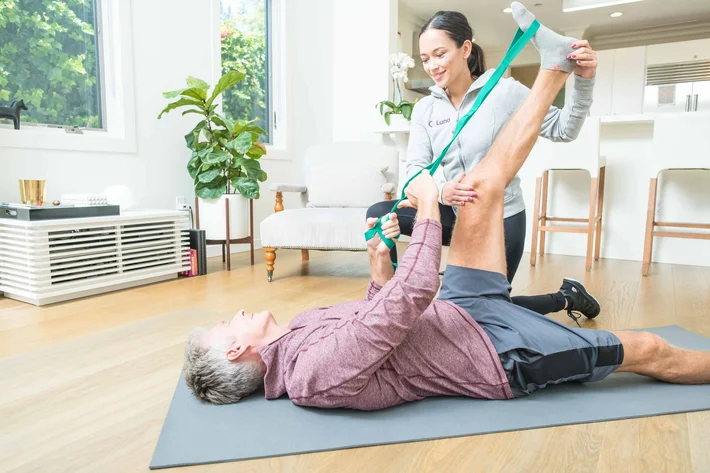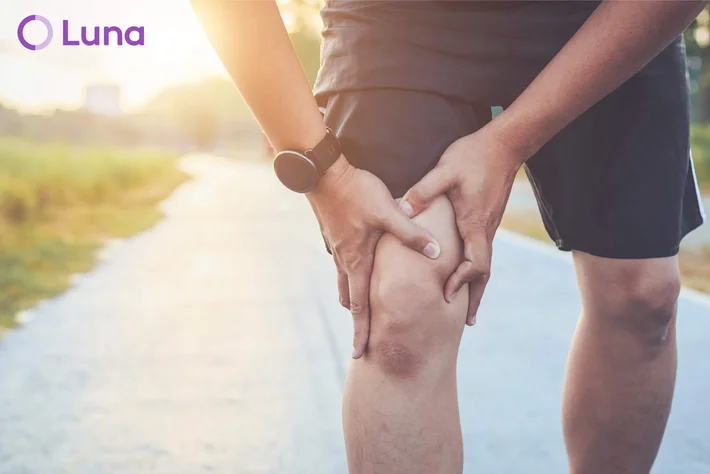
Meet with the best ITB syndrome physical therapists in Tehachapi, California
Tehachapi, California, Luna employs a roster of physical therapists who specialize in treating patients with ITB syndrome. Our PTs will work with each patient to identify any traits or habits that may be contributing to their condition, and create a physical therapy routine designed to reduce pain, restore strength, and improve mobility.
Best of all, with Luna, patients can receive physical therapy for ITB syndrome right in the comfort of their own homes. Our physical therapists come to you — it’s physical therapy, delivered.

What is ITB syndrome?
The iliotibial band (ITB) is a thick group of fibers that runs along the outside of the thigh and knee. It’s common for patients (especially runners or cyclists) to experience problems with the section of the IT band that overlaps with the knee. That’s because the IT band is meant to glide smoothly over the knee as the leg bends and straightens. With overuse, however, too much friction can produce swelling and discomfort.
Though ITB syndrome can result from a number of specific physical traits, including bowed legs, one leg that’s longer than the other, or pronation, it can also be exacerbated by poor exercise technique. For example, failing to warm up or cool down or not resting enough between workouts can cause the IT band to swell. Fortunately, ITB syndrome rarely requires surgery, and can usually be resolved with time, rest, and physical therapy.
Source: WebMD

What causes ITB syndrome?
ITB syndrome is typically caused by overuse, but certain physical traits and habits can make certain patients more susceptible to developing the condition. For example, patients with bowed legs, arthritis in the knees, uneven leg lengths, or weak core muscles tend to be more susceptible to developing ITB syndrome.
In addition, a number of specific exercise habits can place patients at risk. These include failing to stretch, warm up, or cool down; exercising for too long; wearing worn-out shoes; not resting long enough between workouts, or only running in one direction around a track or on a road.
The most common causes of ITB syndrome include:
- Bowed legs
- Arthritis in the knee
- Failing to stretch, warm up, or cool down
- Exercising too hard or for too long
- Inappropriate footwear


















